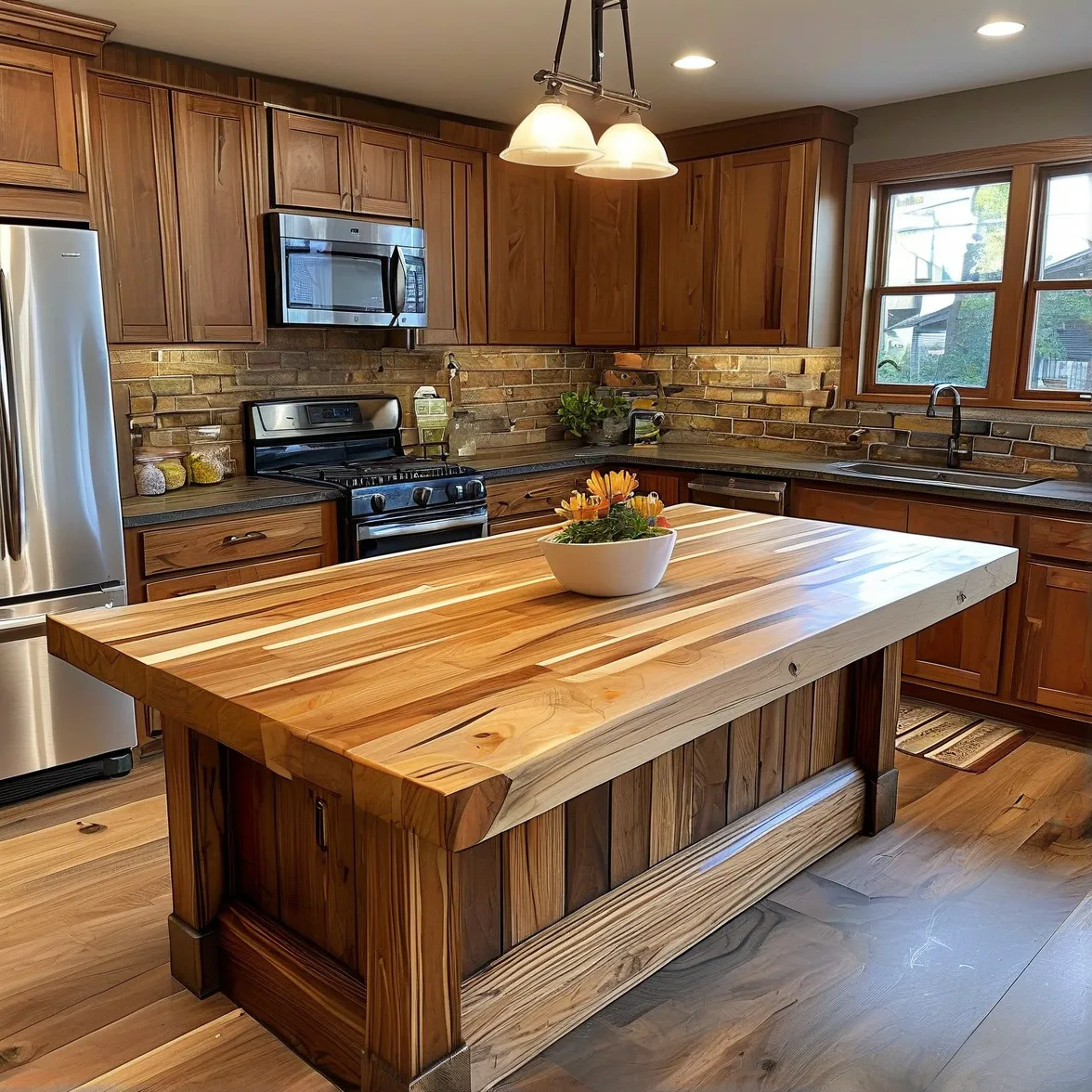When considering a natural wood countertop for heavy-duty kitchen islands, homeowners often wrestle with durability concerns and functional trade-offs. A 12 ft butcher block countertop presents unique advantages and challenges that require careful evaluation, especially for high-traffic kitchens where both aesthetics and resilience matter.
Why Butcher Block Stands Out for Heavy-Duty Use
Butcher block countertops earn their reputation in professional kitchens due to their exceptional durability. Constructed from laminated hardwood strips, these surfaces withstand heavy cutting, impact, and daily wear better than many solid-surface alternatives. The Janka hardness scale, which measures wood’s resistance to dents and wear, shows hardwoods like maple (1,450 lbf) and walnut (1,010 lbf) outperforming softer options like pine (420 lbf), making them viable for intense use.
Industry data supports their longevity: properly maintained butcher blocks retain structural integrity for 15–20 years, according to the Hardwood Manufacturers Association. This lifespan rivals quartz and granite when regular upkeep is prioritized.
Key Considerations Before Installing a 12 ft Butcher Block
1. Structural Support Requirements
A 12 ft span demands robust cabinetry or support beams to prevent sagging—a critical factor often overlooked. For islands over 10 ft, UL Environment recommends adding steel brackets or reinforced base cabinets spaced every 4 ft. Inadequate support can lead to warping, especially in humid climates.
2. Maintenance Realities
While butcher block tolerates knife marks better than stone, it requires quarterly oiling (food-grade mineral oil or beeswax) to prevent drying and cracking. Commercial kitchens using NSF-certified blocks recondition surfaces monthly, demonstrating the care needed for heavy-use scenarios.
3. Moisture Resistance Solutions
Water exposure remains the Achilles’ heel of wood countertops. Hybrid finishes like Rubio Monocoat’s Oil Plus 2C (tested to EN 12720:2009 standards) create moisture barriers while preserving the natural wood aesthetic—a middle ground between traditional oils and plastic-like polyurethane coatings.
Comparative Performance Against Alternatives
A Consumer Reports analysis (2023) evaluated materials for scratch/heat resistance and repairability:
– Butcher block scored 8/10 for repairability (vs. 2/10 for quartz)
– Heat resistance lagged at 5/10 (vs. granite’s 9/10)
– Scratch resistance averaged 6/10 (compared to porcelain’s 9/10)
This makes wood ideal for baking stations or prep zones but less suitable near high-heat appliances without protective pads.
Cost-Effectiveness Analysis
Initial costs for 12 ft premium hardwood blocks range from $1,800–$3,200 (unfinished), versus $4,500+ for quartz installations of equivalent size. However, lifetime costs shift when factoring in refinishing ($150–300 every 5–7 years) vs. stone replacement expenses for chips/cracks.
Real-World Success Strategies
Portland-based designer Maria Cortez shares actionable insights from commercial retrofits:
– Use end-grain construction for maximum durability in chopping zones
– Designate “wet zones” with integrated drainage grooves near sinks
– Implement biweekly cleaning with pH-neutral products like Bona Wood Cleaner
These practices extend countertop lifespan while maintaining food-safe surfaces—a priority validated by NSF/ANSI 51 certification standards.
When to Choose Alternatives
Butcher block proves less ideal in homes where:
– Daily disinfection with bleach-based cleaners is non-negotiable
– Countertops will regularly host hot pans without trivets
– Allergen concerns require non-porous surfaces
In such cases, composite materials like PaperStone (70% post-consumer fiber with petroleum-free resins) offer comparable warmth with enhanced chemical resistance.
The Verdict on Long-Span Installations
A well-executed 12 ft butcher block island delivers unmatched warmth and functionality for avid cooks willing to perform routine maintenance. Its renewable surface adapts to changing kitchen styles through sanding/restaining—an ecological advantage highlighted in FSC-certified wood sourcing reports. For households prioritizing organic aesthetics over zero-maintenance convenience, it remains a compelling centerpiece that balances rustic charm with professional-grade utility.
Critical next steps for buyers: Consult a structural engineer if modifying existing cabinetry and request third-party testing reports for wood finishes to ensure food contact compliance.

Leave a Reply